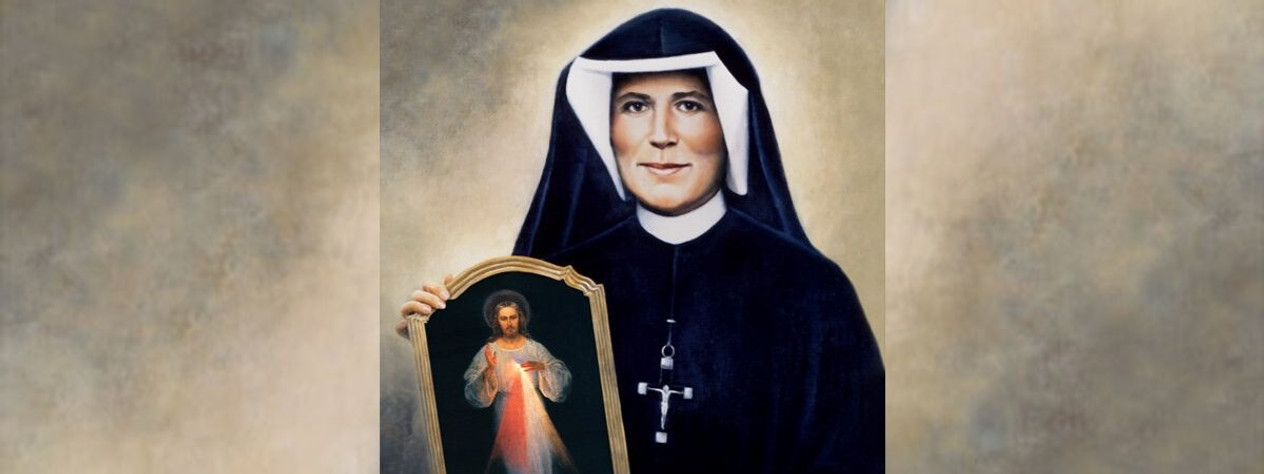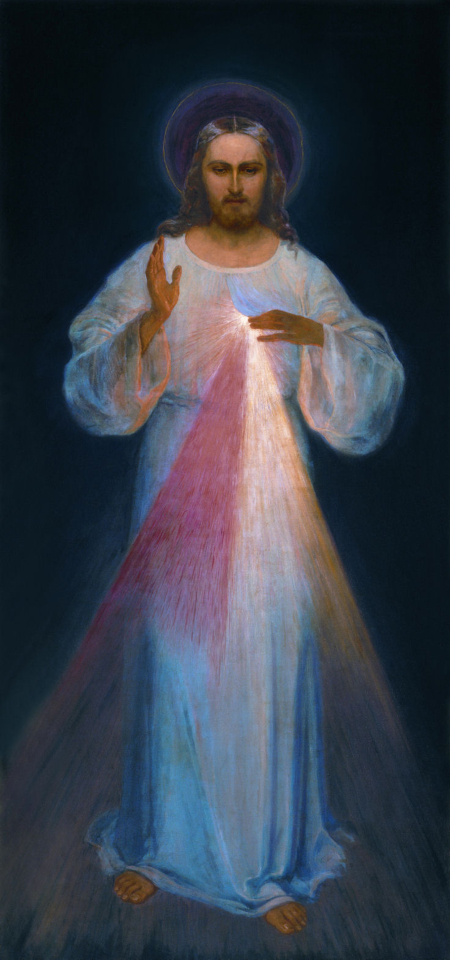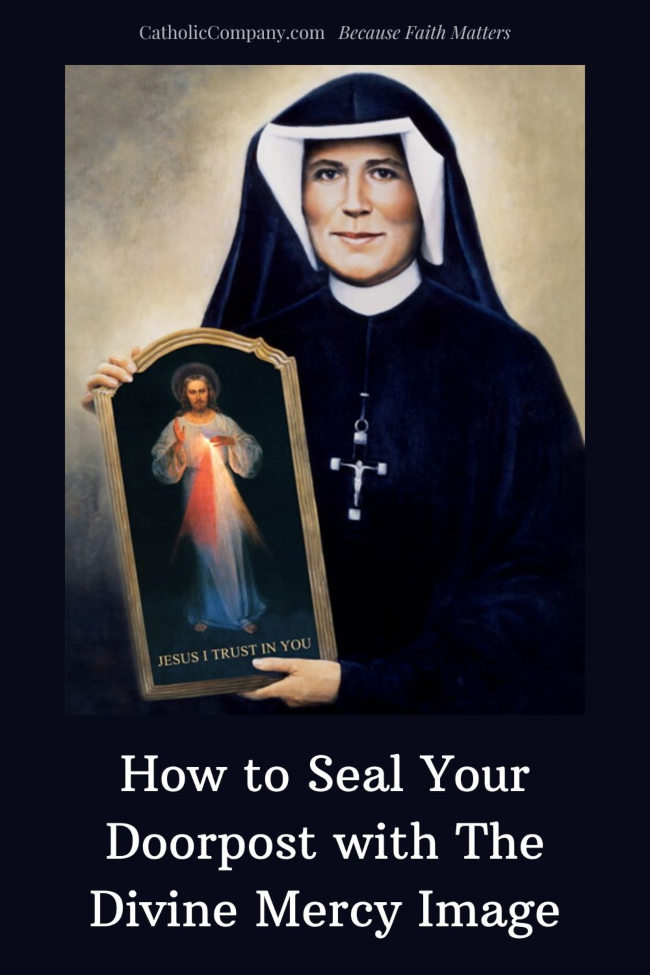Seal Your Doorpost With The Divine Mercy Image
Mar 27, 2020 by Whitney Hetzel
Most of us are familiar with the Divine Mercy image.
Many Catholics pray the chaplet of Divine Mercy frequently, and have this powerful image hanging in their homes or printed on a prayer card.
The Marian Fathers at the National Shrine of Divine Mercy are encouraging Catholics to place the Divine Mercy image on their front doors to show "an incredibly powerful act of faith."
They are making this easy for us by offering a free download of the image to print at home.
Fr. Chris Alar, from the Marian Fathers of Divine Mercy, explains how to do this in a YouTube video. (The verbiage of "sealing our doorposts" is no doubt taken from Exodus 12, in which the Lord commanded the Israelites to sprinkle their doorposts with the blood of the lamb.)
Fr. Alar says, "We urge you to place an image of Jesus the Divine Mercy—facing outward—to express your trust in the Lord's promise of protection."
While he suggests using an image that is blessed by a priest, he explains how the Catechism of the Catholic Church teaches that laypeople are allowed—in particular situations—to "administer" certain blessings, such as the blessing of an image.
"While making the sign of the cross over the image say, 'O Lord I seek your blessing upon this image. Father, Son, and Holy Spirit. Amen.'"
—Fr. Chris Alar
Fr. Alar goes on to say, "The Lord, the lamb sacrificed for us from whose heart flows blood and water, the stream of God's Mercy upon the whole world...The Lord promises us through Saint Faustina that the soul who venerates this image will never perish. He also promises victory over our enemies already here on earth especially at the hour of death and to defend us as his own Glory. The Lord said by the means of this image I shall be granting many graces to souls so let every soul have access to it."

Blessed Michael Sopocko, Saint Faustina’s confessor, once spoke of additional promises that Jesus made to St. Faustina regarding the Divine Mercy image:
When chastisements for sins come upon the world and your own country will experience utter degradation, the only refuge will be trust in My mercy. I will protect the cities and homes in which The Divine Mercy Image is found; I will protect the persons who will venerate [honor] this Image. The only refuge will be trust in My Mercy.
Blessed Sopocko also recalls that Jesus had said:
Let everyone procure for their homes this Image because there will yet come trials. And those homes, and entire families, and everyone individually who will hold this image of mercy in deep reverence, I will preserve from every sort of misfortune. The time will come when all those who do so will give witness to the miraculous efficacy and to the special protection of mercy flowing from this Image.
The Image of The Divine Mercy
You might wonder: what does the image of the Divine Mercy represent?
The following is an explanation of the origins of the image from The Divine Mercy website:
In 1931, our Lord appeared to St. Faustina in a vision. She saw Jesus clothed in a white garment with His right hand raised in blessing. His left hand was touching His garment in the area of the Heart, from where two large rays came forth, one red and the other pale. She gazed intently at the Lord in silence, her soul filled with awe, but also with great joy. Jesus said to her:
Paint an image according to the pattern you see, with the signature: Jesus, I trust in You. I promise that the soul that will venerate this image will not perish. I also promise victory over [its] enemies already here on earth, especially at the hour of death. I Myself will defend it as My own glory (Diary, 47, 48). I am offering people a vessel with which they are to keep coming for graces to the fountain of mercy. That vessel is this image with the signature: Jesus, I trust in You (327). I desire that this image be venerated, first in your chapel, and [then] throughout the world (47).
At the request of her spiritual director, St. Faustina asked the Lord about the meaning of the rays in the image. She heard these words in reply:The two rays denote Blood and Water. The pale ray stands for the Water which makes souls righteous. The red ray stands for the Blood which is the life of souls. These two rays issued forth from the depths of My tender mercy when My agonized Heart was opened by a lance on the Cross. Happy is the one who will dwell in their shelter, for the just hand of God shall not lay hold of him (299). By means of this image I shall grant many graces to souls. It is to be a reminder of the demands of My mercy, because even the strongest faith is of no avail without works (742).
These words indicate that the image represents the graces of Divine Mercy poured out upon the world, especially through Baptism and the Eucharist.
Many different versions of this image have been painted, but Our Lord made it clear that the painting itself is not what is important. When St. Faustina first saw the original image that was being painted under her direction, she wept in disappointment and complained to Jesus: "Who will paint You as beautiful as You are?" (Faustina's Diary, 313).
In answer, she heard these words: "Not in the beauty of the color, nor of the brush lies the greatness of this image, but in My grace" (313).
So, no matter which version of the image we prefer, we can be assured that it is a vehicle of God’s grace if it is revered with trust in His Mercy.
Find the Diary of Saint Maria Faustina Kowalski and other books, prints, and resources for The Divine Mercy here.








